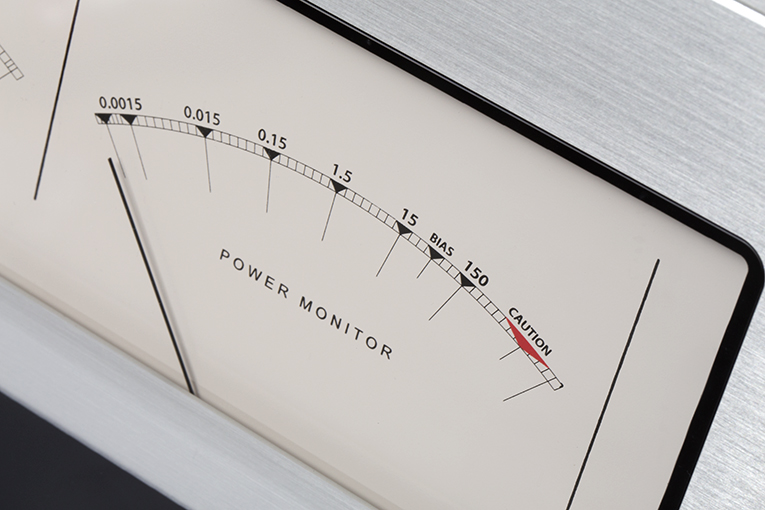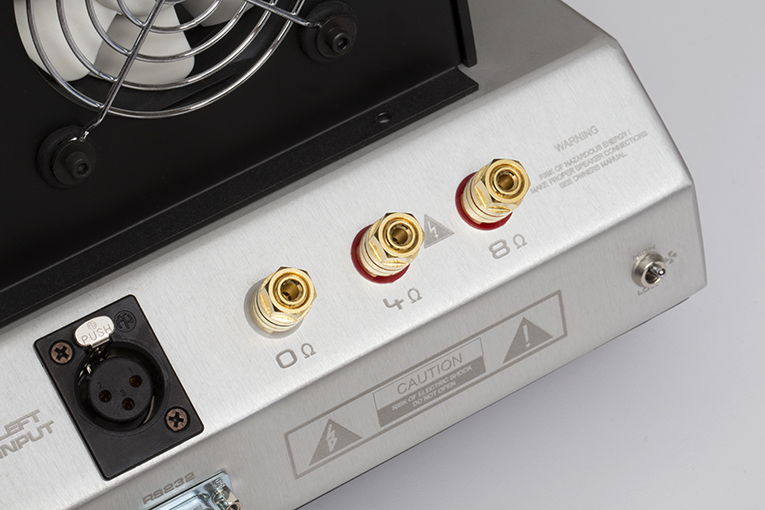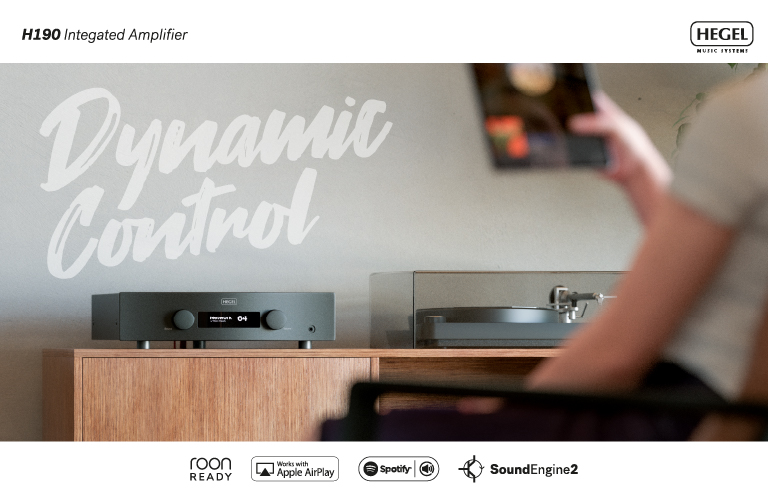Audio Research’s GS150 stereo power amplifier ($20,000 USD) debuted in 2014 as part of the company’s G Series, which includes the GSi75 integrated amplifier ($16,000) and GSPre preamplifier ($15,000). Though the GSPre and GS150 can be considered companion models, as I pointed out last December in my review of the GSPre, I assessed them separately in my reference system, to hear how each sounded. The GS150 ended up mating so well with so many speakers that I could see many audiophiles seeking it out for its neutrality, its generous power output -- and a special aspect of its sound that bettered all my other amps.

Description
In my review of the GSPre, I called it the best-looking preamplifier that Audio Research has made, and the GS150 fills that role among ARC’s power amps. Its large size (19”W x 9.9”H x 22.5”D) and gorgeous retro styling made a bold visual statement in my room -- and between the GSPre and GS150, I prefer the ’150’s looks.

On both models, I like the glass and brushed aluminum of their front panels, and their two-tiered structure as viewed from the side: the GS150’s circuitry is on the bottom, in a chassis of silvery brushed aluminum; the tubes and transformers sit atop this, protected by matte-black covers. The handles, toward the front, are not only attractive, but useful for carrying these components around -- particularly the GS150, which weighs 87 pounds, a lot of that weight awkwardly concentrated near the front, where the transformers are.
The GS150’s front panel has something that the GSPre’s lacks, and that makes it even more appealing to me: three big meters, in classic ARC style. The central meter indicates the incoming line voltage (the needle should always be within the range marked Normal), while the other two show the left- and right-channel power outputs, and can also display the bias level for the left- and right-channel tubes (see below). The meters looked even more attractive when I turned on the Lights button on the front panel, just off-center, toward the right (off-center to the left is the Power button).

The GS150’s rear panel also looks great -- rare in any amp -- and is laid out in a useful way. The top of the wider, lower section is a narrow panel at an angle of 45°; on this are the XLR sockets for the balanced inputs (the GS150 has no unbalanced connections), the 4- and 8-ohm speaker terminals, and the ground posts. This angled deck is handsome and functional, as it eases the attachment of interconnects and speaker cables -- this very large amp is likely to be placed on the floor or a low stand, not in a rack. Just below the inputs and outputs, on the vertical portion of the rear panel, are the 20A power-cord inlet, switches for auto shut-off and cooling-fan speed, an RS-232 connector, and a trigger input.
That the G models look so good isn’t a big surprise. As I explained in the GSPre review, ARC made a deliberate effort to create a bold new look that blended classic Audio Research elements with brand-new ideas that would, in turn, inspire the look of subsequent products. And they have -- the new Reference 6 preamplifier and Foundation separates have some styling cues taken from the G models.

While the GS150’s outward appearance was something of a styling departure when it was introduced, its innards reveal no drastic changes from what ARC has been doing in recent years -- it appears to be the tried-and-true tube technology the company has become synonymous with. To generate the 155Wpc of continuous power that the GS150 is specified to produce into 8 or 4 ohms, each of its two channels has four KT150 output tubes and two 6H30 driver tubes. The tubes arrive pretested, prematched, and packed in their own small box, each tube marked for its corresponding socket: V1 through V8 for the output tubes, V9 through V12 for the drivers. You have to install them, but it’s not much more difficult than inserting an electrical plug into a wall socket. ARC estimates that the tubes will last about 3000 hours of use -- a pretty long time.
Nonetheless, tubes require some care and attention along the way. One thing you have to do is periodically check and possibly adjust each output tube’s bias level. This is pretty easy to do: Turn one of the large Bias/Operate knobs on the front panel to the appropriate socket -- the left knob selects among the left channel’s tubes, V1 through V4; the right knob, V5 through V8 -- and see where the needle falls. Ideally, it should rest in the center of the word Bias, which on the dial is printed midway between “15” and “150”; but according to the manual, anywhere within that range is considered safe. Usually, the tubes don’t stray much from the range. But if a tube’s bias does not fall within this range, insert the blade of a thin, yellow-orange screwdriver (supplied) through one of the holes about 2” behind the faceplate on the same side of the amp as the channel whose tube you’re adjusting. About 1/4” into each hole is a slotted screw head -- with the screwdriver, turn this screw left to lower the bias, right to increase it, watching the meter as you do. You might have to go back and forth between tubes several times -- adjusting one tube’s bias can affect the bias of another -- but the routine is pretty simple. If you can’t get a tube(s) into the proper range, it might be damaged and need replacing; when in doubt, contact ARC.

The other thing you have to watch out for is heat -- tubes run hot, and you don’t want to leave the GS150 on all the time. An Auto Shut Off switch on the back can be set to turn the amp off automatically if it doesn’t detect a signal from the preamp for a short time. Nor do you want to place it in a confined space where it won’t be properly ventilated. Nor do you want to burn yourself on the tubes, or accidentally bump and break them, particularly when the GS150 is turned on. To protect you and tubes alike, ARC supplies a metal cover with rear-firing cooling fans. If you use this cover (I did -- I have small children), make sure the fans are on whenever the amp is turned on. I could see someone using the cover but disabling the fans, thinking that it might improve the sound, but I’m sure the amp would overheat in no time. The fans were audible when my room was very quiet, with no music playing, and my ears were close enough to the GS150 -- but their noise was entirely covered by the sound of music. Best to play it safe: Turn the fans on.
System
While the GS150 was here, I had several very good speakers in for review that allowed me to test the ARC’s versatility -- the standouts were KEF’s Blade Two and Reference 3, PSB’s Imagine T3, and Vivid Audio’s Oval B1 Decade. It worked flawlessly with all of them. I was also able to compare it with amplifiers that varied in terms of power output, topology, and price: Simaudio’s Moon Evolution 870A, a solid-state stereo design (300Wpc into 8 ohms, $22,000); Blue Circle Audio’s BC204, a stereo amp with a tubed input stage and a solid-state output stage (150Wpc into 8 ohms, $7795, discontinued); and JE Audio’s VM60 tubed monoblocks (60W into 8 or 4 ohms, $6000/pair).
The Moon Evolution 740P was my primary preamp for the review, though the GSPre was also in use. DACs were mainly the Hegel Music Systems HD30 and EMM Labs DA2, connected to my Samsung laptop with AudioQuest Carbon or Diamond USB links, playing files with JRiver Media Center 21 or Roon. Analog interconnects were always Crystal Cable CrystalConnect Standard Diamond, the speaker cables always Siltech Classic Anniversary 330L. Normally, I might try an aftermarket power cord on an amplifier, but since the GS150 has a 20-amp receptacle and none of my cords has such a termination, I used the amp’s stock cord plugged into a Shunyata Research Venom PS8 power distributor equipped with a Shunyata Defender noise reducer.
Sound
Just before I sat down to write this section of the review, I proofread Jason Thorpe’s review of the Focus Audio Liszt Concerto Mono integrated amplifiers, published on SoundStage! Ultra. The Concerto Mono costs $25,000/pair, and its power output is a claimed 70W into 8 or 4 ohms. It couldn’t have been timelier for the sonic contrasts it presents.
In his review, Jason loved that the Liszt Concerto Mono uses the EL34 tube, which, he says, “sounds like a tube” -- that is, replete with all the rich, warm, euphonic colorations that tubed amplification has long been known for. The Concerto Monos gave Jason that classic tube sound that he and others prefer, even if it means adding colorations that stray from strict accuracy and aren’t usually produced by good solid-state designs: “For me, one of the benefits of the Liszt Sonata was its tendency to smooth-over the rough edges of poor recordings,” he wrote.

I get what Jason likes -- the JE Audio VM60 monos have a bit of that, particularly in the midrange, where there are some warmth and richness that, in comparison to the Simaudio 870A or the Blue Circle BC204, make the latter sound a touch sterile and cold. You can also often hear a slight rolloff in the VM60’s highs, which makes for a softer sound that makes bright recordings sound less so. Those are the “rough edges” he’s likely talking about, and that the VM60 can help cover up.
With the GS150’s classic visual design -- meters, visible tubes, faceplate and handles reminiscent of the big amps of yesteryear -- you’d think that it, too, might have an old-school tubey sound. It didn’t. There was the usual tube rush audible through the speakers when no music was playing, but once the music began, if I didn’t know which amp I was listening to, I probably wouldn’t have known I was listening to tubes. Mostly, the GS150 didn’t behave like a tube amp.

For example, I was never concerned about the ARC’s power output. This was unlike with every other tube amp I’ve tried, all of which have been specced at less than 100Wpc output -- fine for average listening levels in rooms of modest size, but not so good for difficult speakers, or a big room such as mine. When I’ve cranked tube amps up really loud, they’ve always run out of power -- even the JE Audio VM60s, which can drive all of the speakers mentioned above to fairly high but not ridiculously loud levels. Not so the GS150. I pushed it to insanely high listening levels that small tube amps can’t imagine going to, and it acquitted itself fine. Furthermore, when I hit the GS150’s power limit, it never distorted in the aggressive way that solid-state amps can, sounding hard and even sharp the moment they’re pushed too far. Instead, the rare times the GS150 hit its limit, it let me know in a gentler way, by sounding slightly coarser throughout the audioband. Bottom line: The GS150 provided plenty of power for most of my listening needs, and when it ran out of power, it did so gracefully.
I most abused the GS150 when I streamed “Thunderstruck,” from AC/DC’s The Razors Edge (16-bit/44.1kHz FLAC, Atco/Tidal). The drums pounded, the lead guitar screamed, and my ears rang. It was at “11” -- unreasonably loud -- and the sound was still palatable. But though I’d heard the speakers play even louder with the Simaudio Moon Evolution 870A, here is where that bit of coarseness set in. I turned it back down and all was fine again. Of the amps I have here, the 870A can play these and other speakers even louder, which its much higher power output would only lead you to expect; claimed to produce 300Wpc into 8 ohms, it should provide 3dB more headroom; at 600Wpc into 4 ohms, that headroom rises to 6dB. What I found encouraging about the GS150 was that it was, by far, the most powerful tube amp I’ve ever used here -- it played every pair of speakers as loudly as I needed to hear them.

Above its ability to deliver enough power, the GS150 managed to drive every speaker with higher degrees of neutrality and transparency than I’ve heard from any other tubed design. For example, the high-resolution version of Leonard Cohen’s Popular Problems (24/96 FLAC, Columbia) has a slightly smoother, warmer sound than its CD counterpart, which already sounds pretty smooth and warm. (I doubt the differences have anything to do with the different resolutions; instead, I believe different masters were used to create each.) The GS150 added no smoothness or warmth to the sounds of the hi-rez or CD version, nor did it decrease either of those qualities; rather, the ARC revealed what was there on each release, and the differences between them, just as clearly as I’ve heard them through the 870A and BC204, which are also very neutral-sounding, highly revealing amps. In “Long Hard Road,” from Sade’s Soldier of Love (16/44.1 FLAC, Epic), lead singer Sade Adu’s voice is miked to give it warmth and presence, but again, the GS150 added nothing of its own -- it simply presented what’s on the recording, just as do the 870A and BC204. On the other hand, the VM60s, which lean a bit more toward that typical warm tube sound that Jason loves, do add a bit more midrange warmth and presence to her voice on this album. It certainly can be pleasing, but there’s no getting around it: It’s a coloration.
Similarly, I heard nothing in the GS150’s reproduction of the frequency extremes that could be likened to the high- and low-frequency rolloffs so commonly heard from tube amps. All told, the superneutral GS150 reproduced the superweighty kick drum that drives the beat in the title track of Adam Cohen’s We Go Home (16/44.1 FLAC, Cooking Vinyl) with the kind of punch and authority it needs to really come alive. The ultra-low-bass frequencies that underpin “Mining for Gold,” which begins the Cowboy Junkies’ The Trinity Session (16/44.1 FLAC, RCA), had the solidity and heft they need to be reproduced accurately. Obviously, how deep the bass went depended on which speakers I used -- the speakers’ low-frequency outputs differed -- but I found that the GS150 wasn’t the limiting factor in what each speaker could do down low. In contrast, the JEA VM60s can lack a touch of bass weight, and sound a bit woolly and loose at the bottom, which means they can’t always bring the best bass out of the speakers they’re driving. The Blue Circle BC204 presents bass pretty much as did the GS150, but the Simaudio 870A doesn’t -- it couldn’t reach any lower or sound fuller in the bass than the ARC. But with tracks that have punchy, visceral bass, it could render the lowest frequencies with more impact and slam, and therefore sound a bit quicker and more incisive. When it came to all-out bass slam, I award the medal to Simaudio’s pure solid-state Moon Evolution 870A.

In the upper frequencies, the GS150 sounded extremely clean and very sweet, with no hint of reticence -- that is, no audible rolloff. For example, Adele’s inherently bright-sounding 21 (16/44.1 FLAC, XL) sounded just that way through the GS150: bright. The ARC did nothing to tame it. Thankfully, though, it also did nothing to exacerbate the album’s brightness -- throughout, 21 sounded exceedingly clear and was very listenable. AC/DC’s “Thunderstruck” is also tipped up at the top, and that’s precisely what I heard. Brightness in, brightness out -- the GS150’s tubes didn’t editorialize the sound to make it more palatable. Neither does the 870A or the BC204 -- but my VM60s do soften the highs just a bit.
All that said, the GS150’s sound had one characteristic that may or may not have had to do with its tubes, but gave it an edge over the other amps I compared it with: a superiority at re-creating a sense of space. Over and over, as I played recordings on which the width and depth of the original venue seems to have been captured, those spaces seemed to be greater in all three dimensions through the GS150. It could project huge soundstages, and made music sound really open and free in my room. This was really obvious with The Trinity Session, which was recorded in a large church and sounds it, and has been my reference for soundstaging and imaging for 25 years; and with the choral music in Ennio Morricone’s score for the film The Mission (16/44.1 FLAC, Virgin), which can also cast an enormous soundstage. But even typical studio recordings that usually provide little illusion of space sounded a bit more wide, deep, and open through the GS150 -- in “Pacing the Cage,” from Bruce Cockburn’s The Charity of Night (16/44.1 FLAC, True North), there was a bit more space around his voice and guitar than I usually hear through the amps I have here.

Individual aural images on those stages weren’t any tighter or better focused than through the other amps, but the GS150’s superior reproduction of spaciousness made its sound slightly grander than either the 870A’s or BC204’s, which in direct comparison sounded a little closed-in. The VM60s could almost match the GS150’s spaciousness, but not quite.
What accounts for the spaciousness of the GS150’s sound? Its tubes? So many factors go into any amplifier design that I can’t know for sure. The only thing I can do is tell you what I heard -- and when I boxed up the GS150 to send it back to ARC, that sense of space was tough to say goodbye to.
Conclusion
Audio Research’s GS150 might have some styling cues from yesteryear that could have you thinking its sound will be old-school as well, but I didn’t find that to be the case. It’s a thoroughly modern-sounding amplifier that passes music along with high accuracy, completely devoid of the kinds of colorations heard from more traditional tubed designs. Although the GS150’s lack of such colorations might not be the cup of tea of those who, like our own Jason Thorpe, live for the old-time tube sound, its adeptness at re-creating recorded space will probably win them back. For those who want a neutral sound, excellent resolution, high power, ease of use (for a tubed amp), superb build quality, and beautiful industrial design, Audio Research’s GS150 is very tough to beat.
. . . Doug Schneider
das@soundstagenetwork.com
Associated Equipment
- Loudspeakers -- KEF Blade Two and Reference 3, PSB Imagine T3, Vivid Audio B1 Decade
- Power amplifiers -- Blue Circle Audio BC204, JE Audio VM60 monoblocks, Simaudio Moon Evolution 870A
- Preamplifiers -- JE Audio VS10.1, Simaudio Moon Evolution 740P
- Digital sources -- Hegel Music Systems HD30, Simaudio Moon Evolution 650D, EMM Labs DA2
- Computer -- Samsung laptop running Windows 10, JRiver Media Center 21, Roon
- USB links -- AudioQuest Carbon and Diamond
- Analog interconnects -- Crystal Cable CrystalConnect Standard Diamond
- Speaker cables -- Siltech Classic Anniversary 330L
- Power cords -- Shunyata Research Venom HC
- Power distributors/conditioners -- Shunyata Research Venom PS8 and Defender noise reducer/EMI suppressors (2)
Audio Research G Series GS150 Stereo Amplifier
Price: $20,000 USD.
Warranty: Three years parts and labor; 90 days, tubes.
Audio Research Corporation
3900 Annapolis Lane N.
Plymouth, MN 55447-5447
Phone: (763) 577-9700
Website: www.audioresearch.com






















